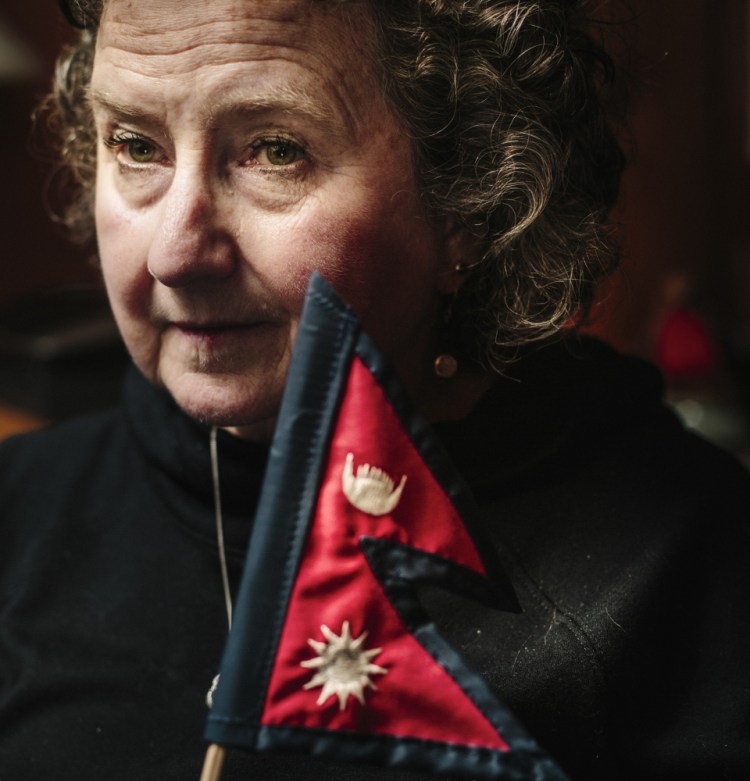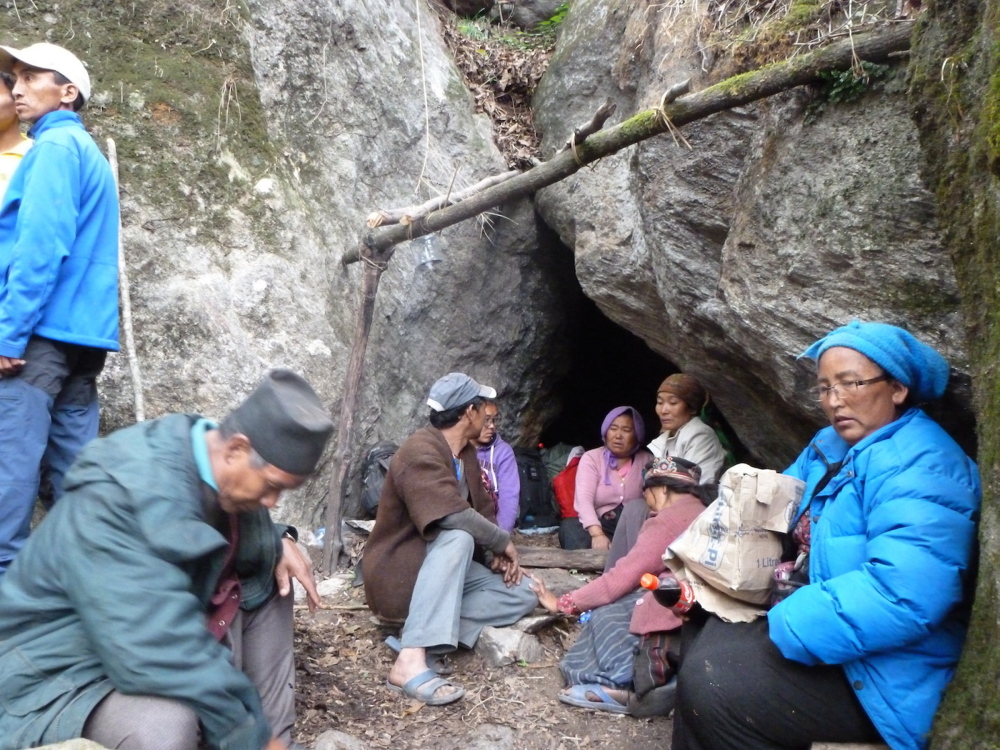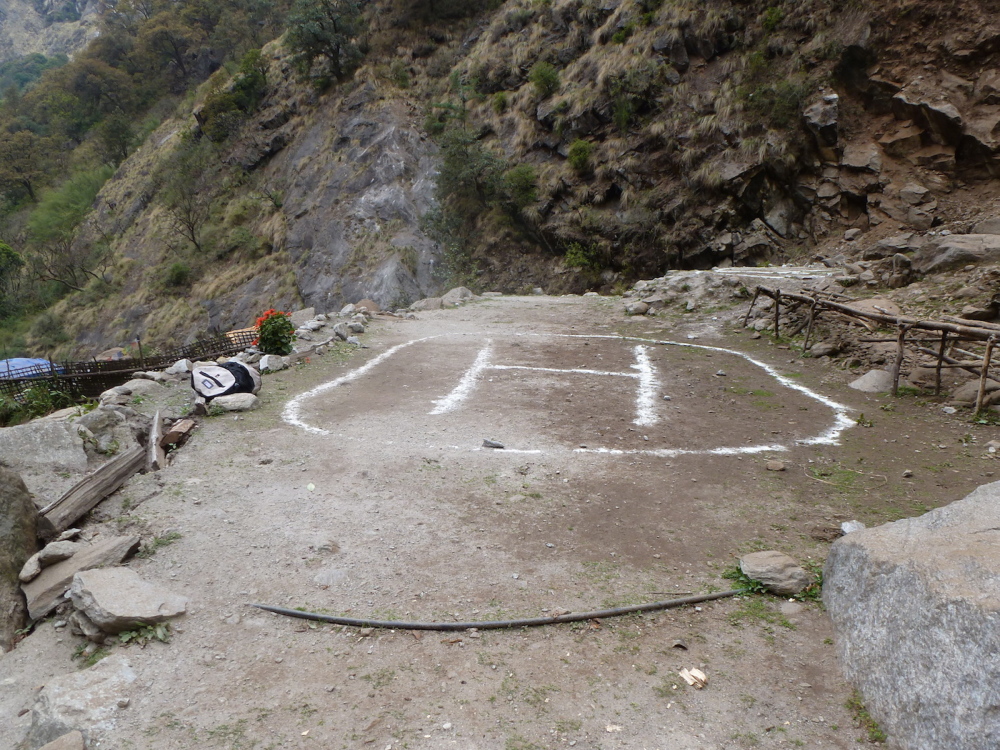A Maine woman who was trekking at a national park in Nepal when a deadly earthquake struck is telling her survival story for one reason.
Kathleen Nolan, who slept in a cave and had to be rescued by helicopter, says people around the world must not forget what happened in the poverty-stricken country. And she plans to do everything she can to make sure the Nepalis get the help they need.
“I want this (story) to stay on the front burner for a while. I want people to remember the Nepalis,” Nolan said Monday night in a telephone interview from her Kennebunk home a day after she flew back to Maine. “Those people were left with nothing. They lost everything. Nepal is a poor country in the best of times.”
Officials are estimating that the April 25 earthquake and resulting landslides and avalanches killed more than 7,200 people.
“There was never a moment when we truly felt safe,” said Nolan, who has traveled extensively since she retired as a dance instructor, most recently at Thornton Academy in Saco for 16 years.
Nolan, 65, and her guide began a trek in Langtang National Park on April 24, taking a trail that winds through a narrow river valley with tall mountains on either side.
Nolan said Dawn Habash of Augusta was hiking miles ahead of her at the other end of the trail when the earthquake struck. Habash’s family has not heard from her since April 25.
“I did not see Dawn when I was there. I didn’t have any contact with her,” said Nolan, who knows of Habash through media accounts.
Nolan heard that Habash may have been trekking near Langtang Village, which the BBC News reported was buried by an avalanche of ice and snow. A BBC reporter said that, with the exception of one building, every house and lodge in the village of 400 people was destroyed. The reporter said rescue crews are recovering the bodies of locals and tourists.
“The village is gone,” Nolan said.
She had been trekking since 7 a.m. on April 25 when she stopped in the village of Bamboo to eat lunch along the river with several other trekkers and locals. The ground started to tremble soon after, sending car-sized boulders rolling down the slopes on each side of the valley.
“When the earth started to move it was very violent. It was shaking and rolling,” Nolan recalled. “For some reason I stood up and my guide came running at me. He said, ‘Get down, get down.’ He threw his body on top of me to protect me.”
Large boulders hit trees, house and lodges. Others rolled into the river as smaller rocks flew all around Nolan and her guide. Incredibly, they escaped being hit.
“Huge boulders were coming at us. I don’t know how I survived,” she said.
One man was killed. Another person suffered a serious head injury.
Once the earth stopped shaking, the survivors decided to climb to a rock wall that the locals knew about. They believed the wall and a nearby cave would shield them from more landslides.
After some hesitation, Nolan entered the cave and spent the night there with other survivors.
“We felt somewhat safe, but the ground continued to shake constantly,” Nolan recalled.
The survivors left the cave the next day and set up camp outside. They spent three nights and nearly four days at the makeshift campsite, boiling water from the river to drink and eating food from the village.
During that time they cleared rocks for a potential helicopter landing site, using flour from the village to mark the site on the slope and a second one near the river. They had to repeatedly drive away cows that meandered onto the landing sites to eat the flour.
“That (landing site) became a priority for us because it was our only way to get out,” she said.
Nolan said a group of Israelis stranded at the site with her were able to use a satellite phone to send emails to the families of everyone at the campsite, which at one point numbered close to 50 people. Her husband, John Nolan, received an email letting him know that she was OK.
The satellite phone also was used to transmit their coordinates to rescuers. The first group of survivors to be airlifted from the site were five elderly Japanese trekkers.
“We created a triage list that said the elderly and the injured would go first,” Nolan said.
Nolan was airlifted off the site April 28 and taken to Kathmandu, where she spent four days at the U.S. Embassy.
“I pleaded with them to get help to those people,” Nolan said. “I told the embassy officials that those people need help or they are going to die.”
She said a U.S. special-operations team flew into the site and rescued the remaining survivors.
Nolan is grateful to be alive, but worries constantly about those who are missing.
“I felt like my life was in danger the entire time. It was terrifying,” she said.
Nolan said anyone who wants to make a donation to Nepal, or needs suggestions on how to get it to the villagers and locals who need it most, can contact her at kathleenolan616@yahoo.com.
Send questions/comments to the editors.






Success. Please wait for the page to reload. If the page does not reload within 5 seconds, please refresh the page.
Enter your email and password to access comments.
Hi, to comment on stories you must . This profile is in addition to your subscription and website login.
Already have a commenting profile? .
Invalid username/password.
Please check your email to confirm and complete your registration.
Only subscribers are eligible to post comments. Please subscribe or login first for digital access. Here’s why.
Use the form below to reset your password. When you've submitted your account email, we will send an email with a reset code.